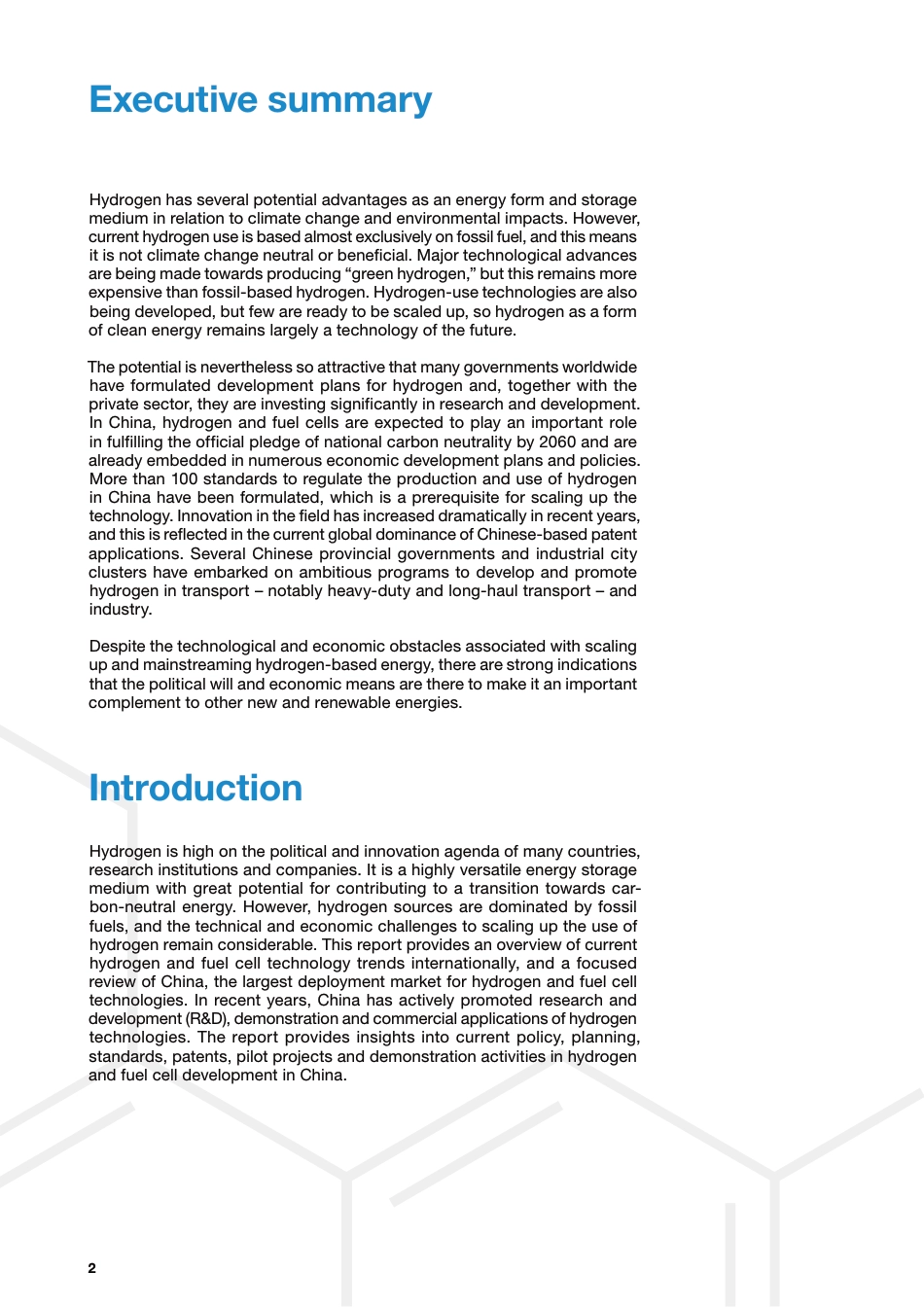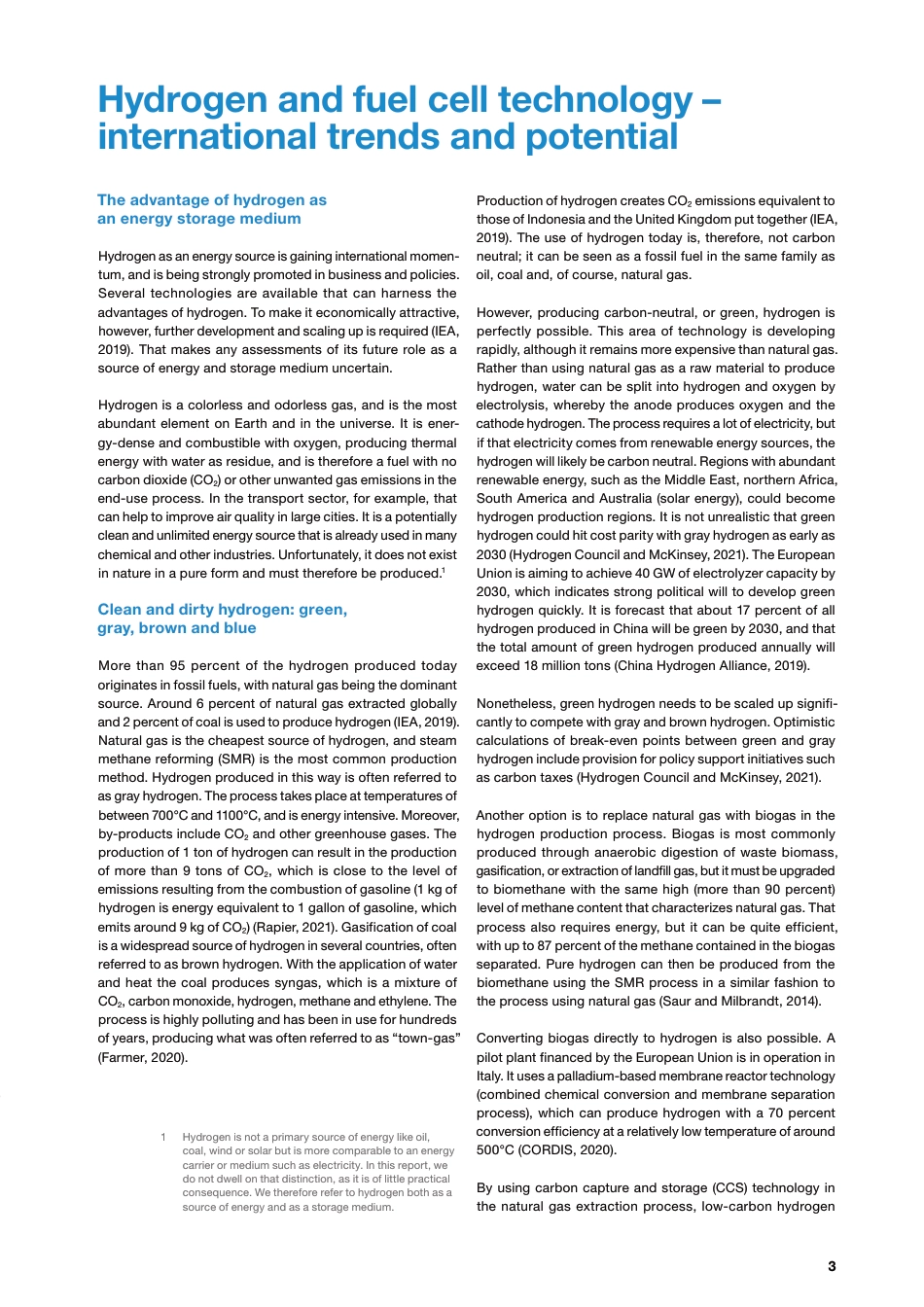Progress in hydrogen fuel cell technology development and deployment in ChinaGlobal Challenges in FocusHongxing (Tonny) Xie*Peter Oksen**Xingxing Guo*Xin He*Yue Bian* *Bluetech Clean Air Alliance, Beijing **WIPO GREEN, GenevaWith contributions from Wanyi Wang, United Nations Development Programme (UNDP) China Office, and Ziyuan Wang, Foshan Institute of Environment and Energy Technology, China2Executive summaryHydrogen has several potential advantages as an energy form and storage medium in relation to climate change and environmental impacts. However, current hydrogen use is based almost exclusively on fossil fuel, and this means it is not climate change neutral or beneficial. Major technological advances are being made towards producing “green hydrogen,” but this remains more expensive than fossil-based hydrogen. Hydrogen-use technologies are also being developed, but few are ready to be scaled up, so hydrogen as a form of clean energy remains largely a technology of the future.The potential is nevertheless so attractive that many governments worldwide have formulated development plans for hydrogen and, together with the private sector, they are investing significantly in research and development. In China, hydrogen and fuel cells are expected to play an important role in fulfilling the official pledge of national carbon neutrality by 2060 and are already embedded in numerous economic development plans and policies. More than 100 standards to regulate the production and use of hydrogen in China have been formulated, which is a prerequisite for scaling up the technology. Innovation in the field has increased dramatically in recent years, and this is reflected in the current global dominance of Chinese-based patent...



